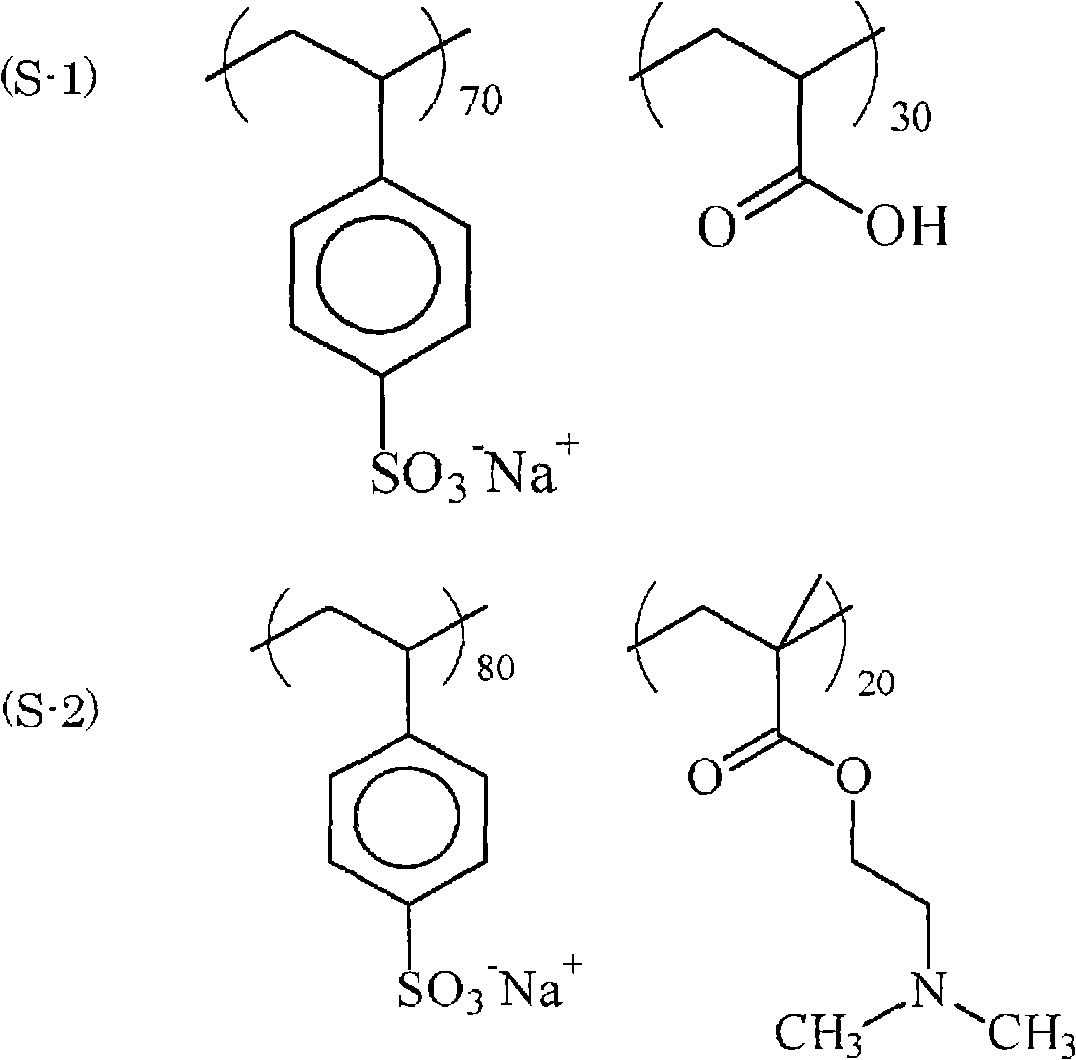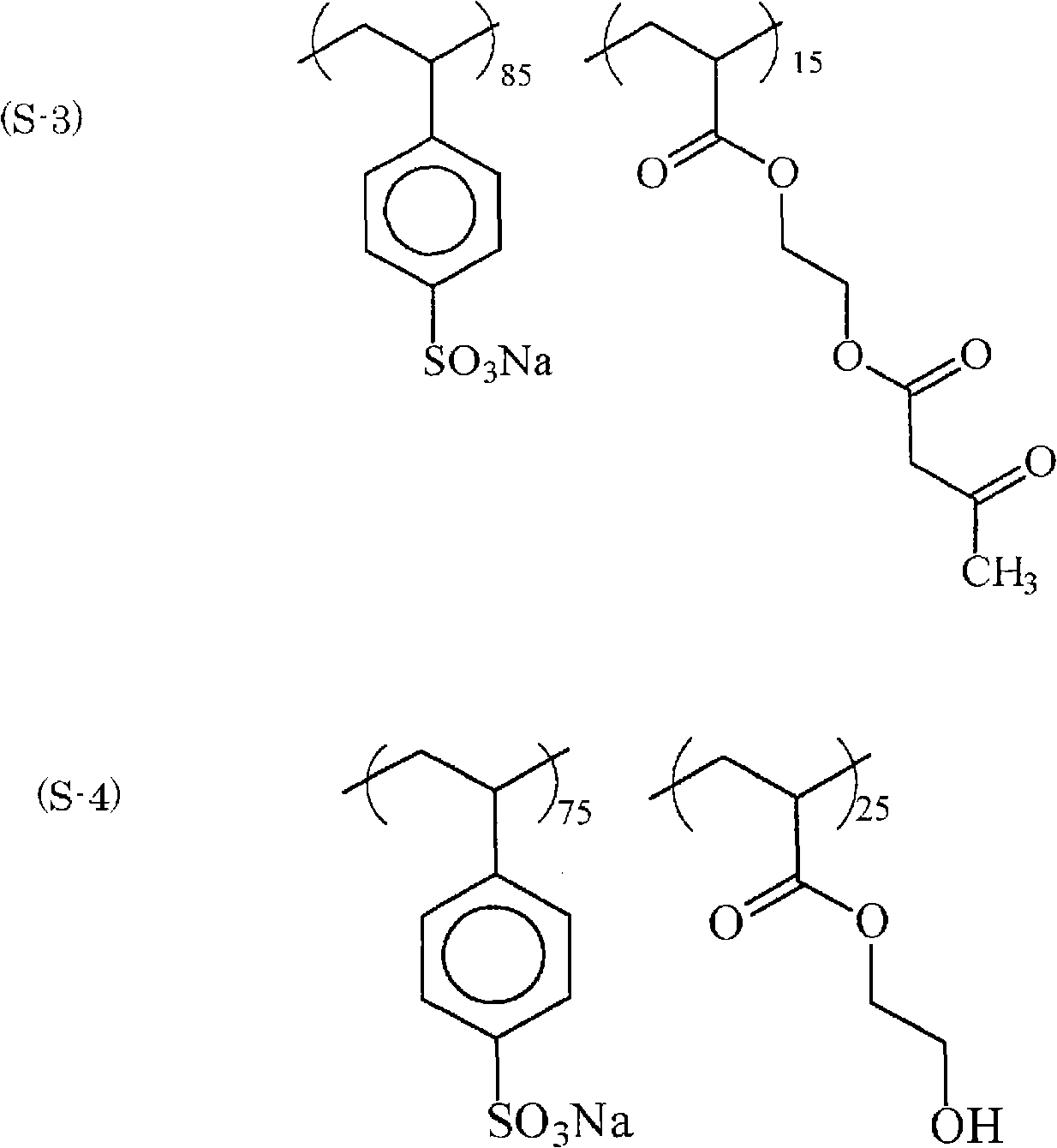Photosensitive lithographic printing plate material developable with water
A lithographic printing plate, photosensitivity technology, applied in the field of photosensitive lithographic printing plate materials, to achieve the effect of excellent printing resistance and no dirty plate
- Summary
- Abstract
- Description
- Claims
- Application Information
AI Technical Summary
Problems solved by technology
Method used
Image
Examples
Embodiment 1~9
[0190] (support body)
[0191] A polyethylene terephthalate film having a thickness of 100 μm having an undercoat layer laminated with vinylidene chloride and gelatin in this order was used as a support.
[0192] (hydrophilic layer)
[0193] Using the above support, a hydrophilic layer represented by the following formulation was formed on the support. Coating was performed using a wire bar so that the coating amount of the hydrophilic layer was 2 g per 1 square meter in terms of dry mass. Drying was carried out by heating for 20 minutes in a dryer at 80°C. Further, the sample was heated in a dryer at 40° C. for 3 days, and then applied to the photocurable photosensitive layer.
[0194] (Hydrophilic layer coating solution formula)
[0195] Water-soluble polymer (table 1) solution (10% concentration) 10g
[0196] Colloidal silica (Snowtex PS-S manufactured by Nissan Chemical Industry Co., Ltd.)
[0197] (20% concentration) 10g
[0198] Cros...
Embodiment 10~13 and comparative example 10~12
[0257] In the formulation of the following hydrophilic layer coating liquid, samples 10 to 13 and comparative samples were prepared in the same manner as in Example 1, except that the ratio of colloidal silica to the water-soluble polymer and the type of colloidal silica were changed. Samples 10 to 12 were subjected to various evaluations in the same manner as in Example 1.
[0258] (Hydrophilic layer coating solution formula)
[0259] Water-soluble polymer (S-1) solution (10% concentration) X (g) in table 6
[0260] Colloidal silica (Snowtex manufactured by Nissan Chemical Industries, Ltd.)
[0261] (20% concentration) Y (g) in Table 6
[0262] Cross-linking agent (E-3) X / 10(g)
[0263] Pure water 10g
[0264] [Table 6]
[0265]
X(g)
Y(g)
Types of Colloidal Silica
Example 10
10
5
PS-S (Necklace)
Example 11
10
15
PS-S (Necklace)
Example 12
10
5
S (sphe...
Embodiment 14~22
[0270] In Examples 14 to 22, photosensitive lithographic printing plate materials 14 to 22 were obtained in the same manner as in Examples 1 to 9 except that an aluminum plate for offset printing provided with a roughened anodized film was used as a support for printing plates. These materials were loaded into PT-R4000 as they were, and drawing was performed in the same manner as in Examples 1 to 9, and a water developability test, a printability test (up to 100,000 sheets) and printing on a printing machine were performed in the same manner as in the previous examples. Visibility test. The results are summarized in Table 8.
[0271] [Table 8]
[0272]
[0273] As seen in Table 8, in the results of any of the examples, good printing durability of more than 50,000 sheets was shown, and good water developability, resolution, water retention, ink release, and on-press development were shown sex.
PUM
| Property | Measurement | Unit |
|---|---|---|
| particle size | aaaaa | aaaaa |
| particle diameter | aaaaa | aaaaa |
| particle diameter | aaaaa | aaaaa |
Abstract
Description
Claims
Application Information
 Login to View More
Login to View More - R&D
- Intellectual Property
- Life Sciences
- Materials
- Tech Scout
- Unparalleled Data Quality
- Higher Quality Content
- 60% Fewer Hallucinations
Browse by: Latest US Patents, China's latest patents, Technical Efficacy Thesaurus, Application Domain, Technology Topic, Popular Technical Reports.
© 2025 PatSnap. All rights reserved.Legal|Privacy policy|Modern Slavery Act Transparency Statement|Sitemap|About US| Contact US: help@patsnap.com



